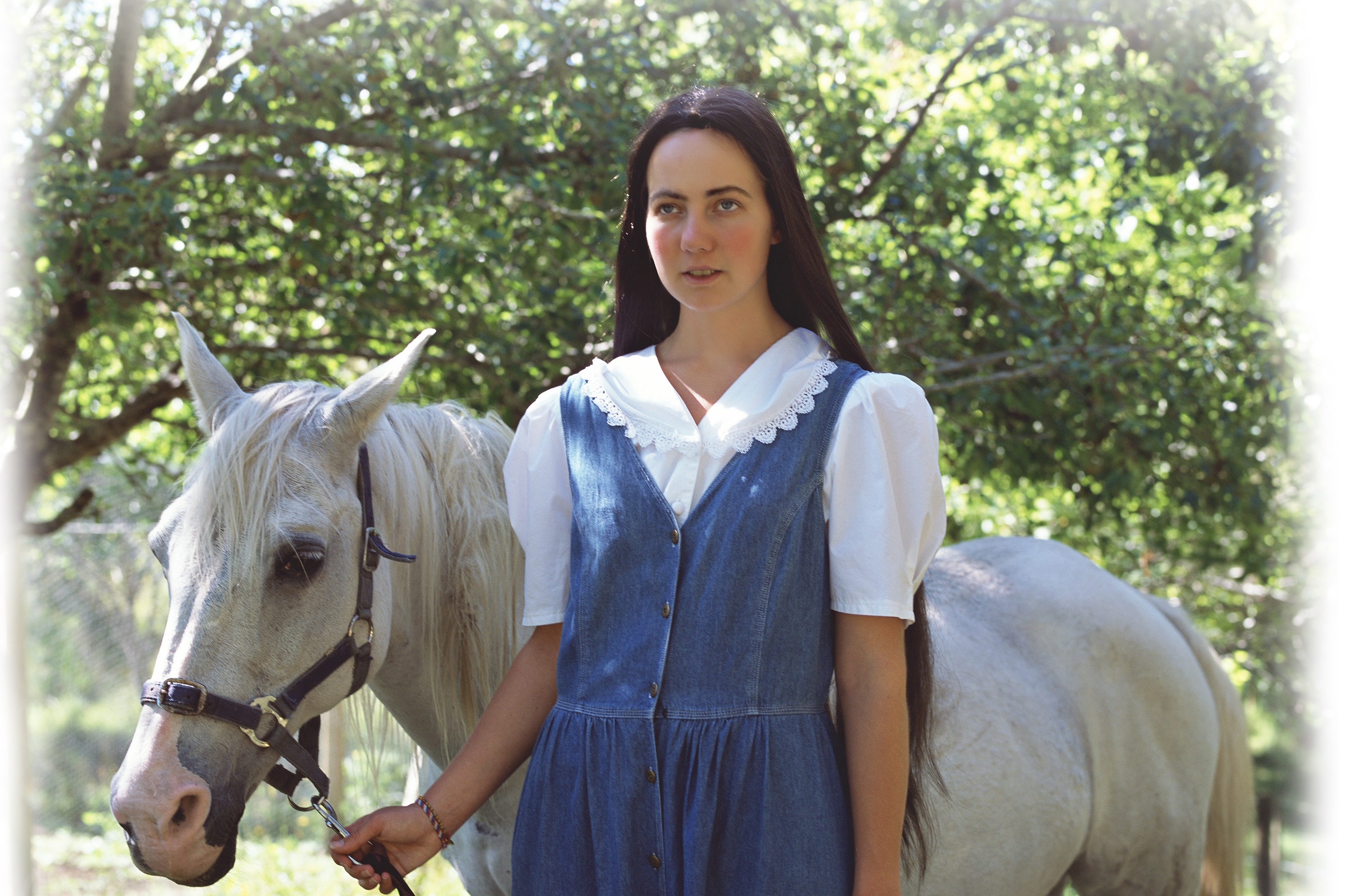
The photographic images in the West Gallery mirrored my feelings. On the walls, rows of women with disappointed faces looked disillusioned and bitter. The Bellevue series on one side of the gallery, actual portraits of cosmetic sales reps, faced across the room to the fictional Sea of Tranquillity works — the air of vulnerability and sadness in the ‘real’ portraits amped up to hopelessness and pain in the fictional ones. None of the women smiles. I moved to the next room.
Here, alongside the child beauty queen series, were some of my favourite Todds: Advancia, Fractoid and Envy Log. Wheelchairs and crutches dominate with strange glamour. I read the text panel. In her childhood, Todd had been envious of the attention the disabled receive. A child in a wheelchair wears a crazy wig. Despite myself, I smirked.
In the East Gallery are some other favourites: the series based on images from Lydia of Purple, a website that sells “modest home-schooling Christian clothing”. These girls are fantastically kooky in their skinny ribs and Little House on the Prairie dresses. Deirdre Barlow glasses top off the look. I was starting to enjoy myself.
Most artists are obsessive in some way. Todd’s obsessions date back to her childhood. Upstairs in the North Gallery, display cases filled with ephemera catalogue these obsessions and provide the back story for the works. There are sketchbooks and Playboy magazines, Jacqueline Susann novels, 1960s Vogue patterns and a letter from Auckland Hospital inviting Todd to an appointment to discuss her eating difficulties. On the walls of the gallery are photographs by Diane Arbus, Bernd and Hilla Becher, Morton Bartlett and Mike Disfarmer — making Todd’s influences clear.
The friend I was with wondered if this contextual material took some of the magic away. I liked it. It filled in some gaps. The photograph of six-year-old Todd with the inscription “a very special young lady with bucked teeth and dandelion ears” made sense of all the portraits of bucked-teeth girls in the exhibition.
By this time my mood had transformed. I was upstairs in the South Gallery, looking at the Seahorse series, when I received another text from the troublesome one. I ignored it. The work, based on Martha Graham’s interpretive dance, seemed to give me permission to. Melancholy women prance in flesh-coloured bodysuits — is this what I’d become? A cipher of a woman? It was time to say goodbye. And I haven’t mentioned the designer dresses. Don’t miss the exhibition. Really.
[info]February Art
Possibly Wellington’s smallest exhibition space is the Turnbull Gallery in the Alexander Turnbull Library, on level one of the National Library. It turns over a regular programme of interesting exhibitions curated by library staff. A Child’s War — words and pictures from World War I (until 27 February) is the current one. It contains photographs, books, letters, a slide show of images and drawings from the Turnbull collection that document the way children were persuaded about, and enlisted in, the war effort.[/info]




